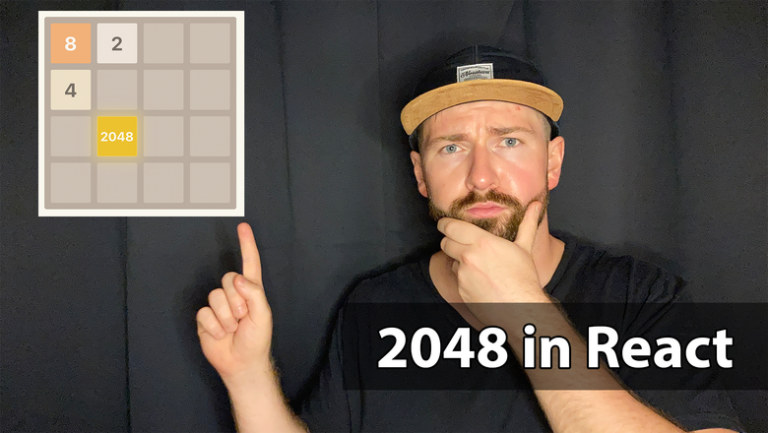SEO website promotion: Instructions

SEO website promotion is the key to a fast and confident position in search engines. It is not mysterious magic, but a mixture of technologies and tactics that increase visibility and attract an audience.
In this article, we will reveal how SEO helps to promote your website to the top positions and share practical steps, important aspects and common mistakes to avoid.
And at the end of the article, instructions on SEO promotion.
What is SEO
SEO (Search Engine Optimization) is the process of optimizing web pages to improve their ranking in search engine results. SEO is based on a number of strategies and techniques that help make a website more attractive to search engine algorithms.
Key objectives of the article:
Understanding the basics of SEO and why it matters to you.
A look at the key elements and metrics of successful SEO.
Practical recommendations and steps for website optimization.
Instructions for SEO website promotion.
We will start the section with the basics of SEO website promotion, where we will look at how SEO optimization works and why SEO analytics is needed.
Basics of SEO website promotion
SEO optimization is a process that involves many aspects: from proper page structure to using the right keywords. All elements must interact to create a harmonious SEO strategy.
How SEO Optimization Works:
To successfully promote a website, it is important to understand the principles of how search engines work:
Search engine algorithms. They analyze a site across a variety of characteristics, including content, loading speed, and mobile responsiveness.
The influence of site structure. Poorly designed navigation and structure can prevent pages from being indexed.
Why do you need SEO analytics?:
Analytics helps you evaluate the effectiveness of SEO campaigns and make informed decisions.
Identifying bottlenecks. Identify which elements of your site need improvement.
Position monitoring. Track ranking changes in response to your SEO efforts.
Web Page Structure and Its Role in SEO:
Every part of your page, from headlines to images, plays a role in SEO:
Title tags and meta tags. They are important factors for search engine ranking.
Image optimization. Using ALT attributes and compressed formats to speed up loading.
By understanding these basics, you lay a solid foundation for further website promotion. In the next section, we'll dive deeper into the key elements of SEO, focusing on keywords and content.
Key Elements of Successful SEO
After understanding the basics, let's move on to the key elements of success seo promotion. In this section, we will focus on the importance of keywords, content optimization, and using LSI words to improve rankings.
The Importance of Keyword in SEO
Keywords play a vital role in SEO strategy. To work with them effectively, you need to consider several aspects:
Selection of keywords. Use specialized tools such as Yandex.Wordstat to determine which queries are most popular among your audience.
Correct placement. Keywords should be in both the title tag and the main content, but overusing them can negatively impact rankings (keyword density should be natural).
Content Optimization
The content of your website should not only be informative, but also structured in a way that attracts search algorithms.
Meta tags and headings. They serve as the first clues to search engines about the content of a page. Proper implementation of meta tags can significantly improve visibility.
Text structure. Use subheadings (h1, h2, h3) to divide the text into logical blocks, improving perception for both users and search engines.
Using LSI words. LSI (Latent Semantic Indexing) words complement the main keyword, describing it from different sides and expanding the context. This improves the semantic perception of the page by search engines.
Examples of using LSI words:
Main keyword | LSI words |
|---|---|
website promotion | optimization, visibility, ranking |
SEO | search engine optimization, traffic, keys |
content | text, article, information |
Technical SEO website promotion
The next step in your strategy is the technical side of SEO. Optimizing the technical aspects of a site is hidden from the user, but is critical to success.
Website loading speed
Speed score affects user experience and website ranking.
ToolsUse Google PageSpeed Insights to evaluate and improve your page loading speed.
Eliminating bottlenecks. Minimize image size and use caching.
SEO adaptability
In the mobile era, responsive design is not a choice, but a necessity.
Adaptability check. Match the design to the mobile version using the Mobile-Friendly Test tool.
User Optimization. Make sure that interface elements are easily accessible on mobile devices.
URL structure and internal linking:
Purity and simplicity. URLs should be short and contain keywords if possible.
Internal links. They strengthen the connection between the pages of the site, improving navigation and weight distribution.
Combining the right selection and use of keywords with technical aspects such as speed and adaptability, you can significantly strengthen your site's position in search engines. By following technical recommendations and strategically selecting content, you strengthen your position in a competitive market and increase the influx of an interested audience.
Content Strategy for SEO
After technical optimization and proper keyword selection, the focus shifts to content. Content is the heart of your site, ensuring interaction with the user audience and maintaining positions in search engines.
How Quality Content Affects SEO:
Relevance and uniqueness. Keep your content updated to keep it relevant and relevant to your target audience.
Depth and detail. Provide information in enough depth that it is valuable to the user and competes with other articles on the same topic.
Strategies for creating unique content:
Market research. Conduct research to determine what topics your audience is interested in. Use this data to write articles that will be useful and interesting to them.
Using multimedia. Include images, videos, and infographics to make your content more engaging and interactive.
Publishing and updating content:
Regularity. Set a publishing schedule and stick to it consistently.
Updating existing articles. Periodically review old content, adding new data and information to keep it current.
Link promotion
After creating quality content, it is important to provide it with support in the form of link promotion, which will improve the authority and position of the site.
Importance of External Links for SEO
Quality links. Don't go for quantity, focus on getting links from trusted and highly authoritative pages.
Natural link building. Practice moderation and avoid manipulation.
How to Get Quality Backlinks:
Guest blogging. Publish articles on other sites to reach their audience.
Partnerships and cooperation. Establishing links to other sites may result in link exchanges.
Monitoring and managing link mass:
Analysis tools. Use Ahrefs or Semrush to regularly check your link profile.
Removing harmful links. Identify and remove links that may harm your site.
Local SEO website promotion
Local SEO is essential for businesses targeting specific geographic regions. This strategy allows you to increase visibility among your target audience in specific locations.
The Importance of Geo-Targeting for Local SEO:
Local Search Engine Optimization. Ensure your site is optimized for local search queries, including the city or region name.
Creating profiles. Registering and optimizing your company profile in Google My Business services will significantly impact your local results.
Reviews and local resources as a ranking factor:
Collecting and managing reviews. Ask your customers to leave honest reviews and actively work to maintain their high level.
Local directories and mentions. List your business in local directories and online resources.
Analytics in SEO promotion
Analytics is the lifeblood of any successful SEO campaign, allowing you to monitor the results of your work and adjust your methods based on the data you receive.
How to Use SEO Analytics Tools:
Google Analytics and Yandex Metrica. These tools help track user behavior and identify successful and unsuccessful moments on the site.
Performance reports. Analyze your metrics regularly to make informed optimization decisions.
Tracking and improving key performance indicators:
Traffic and conversions. Monitor traffic dynamics and conversion rates.
Bounce rates. Find out which pages are causing the most user churn and fix them.
Step-by-step instructions for SEO website promotion
What needs to be done:
Perform internal and external optimization of the site.
Collect a semantic core, perform query clustering (distribute into groups of similar queries). This is an important part of SEO website promotion, so I recommend ordering semantics from specialists (freelancers who have been working for a long time and have reviews).
Every day publish 1-3 articles on the site, each of which should be written for its own group of key queries from the semantic core. You can write the articles yourself or order them on the article buying and selling exchange. Uniqueness should be 100%. Continue publishing articles for up to 12 months or more, preferably every day without breaks. Later, we maintain regularity, but publish 2-4 times a week.
When publishing articles on the site, make internal cross-linking of the site's articles in a circle. This is when one article contains a link to another, and so on in a circle.
After 5-6 months, identify articles for promotion and place links (anchor) to them from other articles on the site. The key queries used when writing the promoted article are suitable for this.
Get article links (Miralinks exchange will help with this, first we get them from sites with similar topics, when they run out, from news sites) and from forums (you can order posting in thematic discussion threads, for example on the Advego exchange). 80% of the links should be of the type of URL address of the promoted article, 10% of the type: here, here, on this site, etc., the remaining 20% are anchors. Get article links and reviews every month, without stopping this process. And do not forget to get article and forum links to other pages of the site that you do not promote.
Receiving reviews with a URL link to the site or mentioning the site name in the review.
We launch advertising in Yandex Direct in Search and in YAN, set a low price per click to regularly receive traffic. You can launch advertising in Yandex on the site 2-3 months after the start of publishing articles on it, set low prices per click and let it work.
And don't use any black or gray SEO.
If the semantic core is collected qualitatively and a qualitative and SEO optimized article is written for each group of queries, then after the start of link promotion, launching advertising in Yandex and regular publication of articles, traffic will grow. But I warn you that this instruction is for promoting content web projects. The strategy of SEO promotion of commercial sites is different. The process is long, but reliable.
SEO promotion is a complex but extremely important process that requires attention to detail and requires constant improvement. Using the right strategies and tools, you ensure the growth and stable development of your site. The main thing is consistency and adaptation to changes in algorithms and trends. By paying attention to quality content, technical optimization and a quality link profile, you strengthen the position of your site on the global network and gain the trust of your audience.




